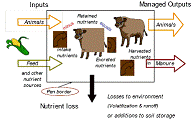Biological Systems Engineering, Department of

Department of Agricultural and Biological Systems Engineering: Presentations and White Papers
Date of this Version
2008
Document Type
Article
Abstract
Lignocellulosic materials are regarded as an alternative energy source for bioethanol production to reduce our reliance on fossil fuels. Pretreatment is important for improving the enzymatic digestibility of lignocelluloses to increase the yield of fermentable sugars. Alkaline (sodium hydroxide and lime (calcium hydroxide)) pretreatment of coastal bermudagrass for enhanced reducing sugars recovery was investigated in this study. The effect of NaOH pretreatment at 121°C using 1%, 2% and 3% (w/v) NaOH for 15, 30, 60 and 90 minutes was evaluated first. Lower NaOH concentrations (0.5% and 0.75%) and lower temperatures (50, 80 and 100°C) were then examined. Lime (0.1 g Ca(OH)2/g raw biomass) pretreatment of the biomass was conducted at room temperature, 50°C, 80°C, and 121°C. Total reducing sugars, glucose and xylose were analyzed. The optimal NaOH pretreatment conditions at 121°C for glucose and xylose production are 15 minutes and 0.75% NaOH. However, to maximize total reducing sugars production, pretreatment at 121°C for 30 minutes using 1% NaOH is needed. The highest reducing sugars yield reached up to approximate 86% of theoretical maximum for NaOH pretreatment. Sodium hydroxide is more efficient than lime at 121°C for improved reducing sugars yield. Increasing temperature reduced the optimal pretreatment time at the same lime loading. The reducing sugars production under optimal pretreatment times was enhanced by 8% of theoretical maximum from room temperature to 80°C.


Comments
An ASABE Meeting Presentation
Paper Number: 084013